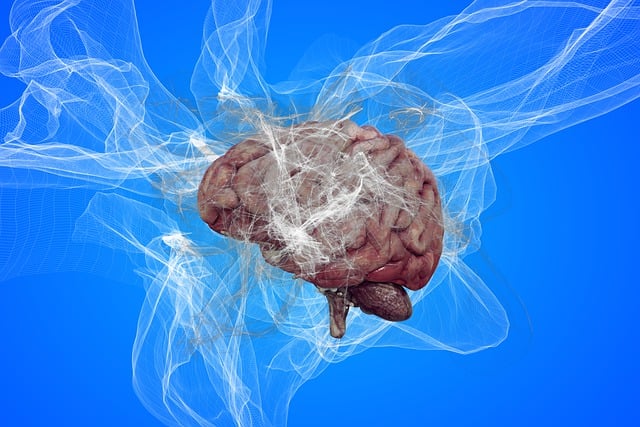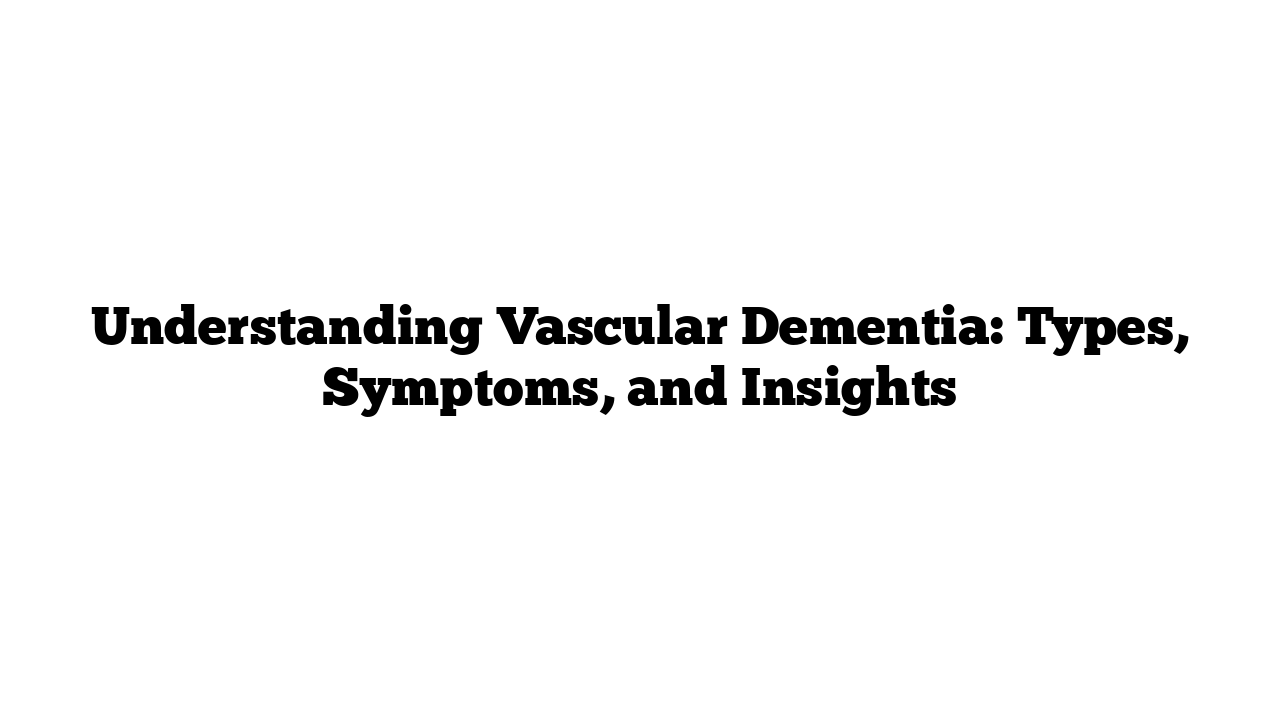Vascular dementia is one of the most common forms of dementia, yet it remains underdiagnosed and misunderstood. This condition occurs when reduced blood flow damages the brain, leading to cognitive decline. Unlike a singular condition, vascular dementia encompasses various subtypes, each with distinct causes and symptoms. Let’s explore these types, their impact, and why early diagnosis is critical.

What Is Vascular Dementia?
Vascular dementia falls under the broader category of vascular cognitive impairment (VCI). This includes:
- Mild neurocognitive disorders (early cognitive impairments).
- Vascular dementia (a more advanced state of memory and cognitive decline).
Damage to the brain’s blood vessels—whether due to stroke, chronic conditions, or genetic factors—is central to this disorder. Depending on the areas affected, symptoms can vary widely.
The 4 Main Types of Vascular Dementia
1. Post-Stroke Dementia
As the name suggests, this occurs after a stroke. Strokes result from interrupted blood flow to the brain, damaging critical brain tissue.
- Causes: Damage can occur in multiple areas of the brain or in one strategic location, such as the thalamus, often called the brain’s powerhouse.
- Symptoms:
- Memory loss.
- Cognitive issues (thinking and reasoning).
- Other neurological deficits like paralysis, speech difficulties, or trouble swallowing, depending on the affected brain region.
For example, in the USA, stroke-related dementia often affects older adults with uncontrolled conditions like hypertension or diabetes. Managing these conditions early can significantly reduce risk.
2. Subcortical Vascular Ischemia
This type is linked to damage in the deep white matter of the brain, involving the smallest blood vessels (microvasculature).
- Risk Factors:
- Poorly controlled vascular conditions like hypertension or high cholesterol.
- Aging.
- Symptoms:
- Slowed thinking and movements (bradykinesia).
- Difficulty walking or balancing.
- Urinary incontinence in advanced stages.
Radiologists often describe this as “white matter disease” on MRI scans, but the full scope is rarely investigated. Early management of vascular risk factors can slow its progression.
3. Multi-Infarct Dementia
This subtype results from repeated small strokes or transient ischemic attacks (TIAs) over time. Each event causes slight damage to the brain, which eventually accumulates.
- Symptoms:
- Sudden memory lapses.
- Cognitive decline worsening over years.
- Small “lacunes” (tiny holes) visible on brain imaging.
This type is common in individuals with long-standing cardiovascular conditions. Timely stroke prevention measures are key to avoiding this cumulative damage.
4. Mixed Dementia
Mixed dementia occurs when vascular dementia coexists with another form of dementia, like Alzheimer’s disease.
- Diagnosis Challenges: Current diagnostic criteria often miss this subtype unless a patient shows both degenerative (e.g., brain shrinkage in the temporal lobe) and vascular signs (e.g., strokes or white matter disease).
- Symptoms:
- A combination of cognitive impairments, gait issues, and memory loss.
- Behavioral changes linked to Alzheimer’s.
In clinics across the USA, mixed dementia is increasingly recognized, though still underdiagnosed. With early intervention, vascular contributions to mixed dementia can be managed.
Lesser-Known Subtypes of Vascular Dementia
Binswanger Disease
This involves significant white matter damage, commonly seen in individuals with:
- Chronic high blood pressure.
- Aging-related vascular frailty.
Patients often show gait abnormalities, urinary incontinence, and cognitive decline. Managing hypertension is critical in reducing its progression.
Cerebral Amyloid Angiopathy (CAA)
This condition involves the buildup of amyloid proteins in the brain’s blood vessels. Amyloid accumulation weakens these vessels, leading to:
- Microbleeds.
- Hemorrhagic strokes.
- Cognitive impairment.
While amyloid proteins are associated with Alzheimer’s, they also play a role in vascular dementia, especially in older adults.
CADASIL
Short for Cerebral Autosomal Dominant Arteriopathy with Subcortical Infarcts and Leukoencephalopathy, CADASIL is a genetic condition caused by a mutation in the NOTCH3 gene.
- Symptoms:
- Migraines starting in early adulthood.
- Small strokes progressing to vascular dementia by midlife.
- Cognitive and motor impairments.
There is no cure, but controlling vascular risk factors, especially blood pressure, can help manage symptoms.
Why Early Diagnosis Matters
Vascular dementia is often labeled generically as “white matter disease” or “vascular disease” on MRI scans, leaving patients without proper follow-up. However, much can be done, especially in the early stages of vascular cognitive impairment:
- Lifestyle changes: Regular exercise, a healthy diet, and stress reduction can significantly improve outcomes.
- Medical interventions: Controlling blood pressure, cholesterol, and diabetes reduces further brain damage.
- Patient education: Understanding the condition empowers families to seek early intervention and improve quality of life.
Building Awareness and Taking Action
Vascular dementia manifests in many ways, and its impact varies from person to person. In the USA, where conditions like hypertension and diabetes are prevalent, addressing vascular health is vital to preventing cognitive decline.
Remember, conditions like migraines or memory lapses don’t necessarily mean vascular dementia—but if symptoms persist, consulting a doctor is the best course of action. Visit medicaltimes.io for more insights into brain health and prevention strategies.
Frequently Asked Questions (FAQs)
- What causes vascular dementia?
Reduced blood flow to the brain due to stroke, chronic conditions, or genetic factors. - How is vascular dementia diagnosed?
Through clinical evaluation, imaging (e.g., MRI), and assessing risk factors. - Can vascular dementia be cured?
While there’s no cure, managing vascular risk factors can slow its progression. - What are the early symptoms of vascular dementia?
Memory issues, slowed thinking, and difficulty with balance or coordination. - How does CADASIL affect young adults?
CADASIL causes early strokes and migraines, leading to vascular dementia by midlife. - What is mixed dementia?
A combination of vascular dementia and another type, like Alzheimer’s disease. - Is vascular dementia hereditary?
Some forms, like CADASIL, have a genetic component. - How can I reduce my risk of vascular dementia?
Maintain healthy blood pressure, exercise regularly, and eat a balanced diet. - What is white matter disease?
Damage to the brain’s white matter, often linked to small vessel disease. - Can lifestyle changes improve vascular dementia?
Yes, a healthy lifestyle can slow progression and improve overall brain health.
